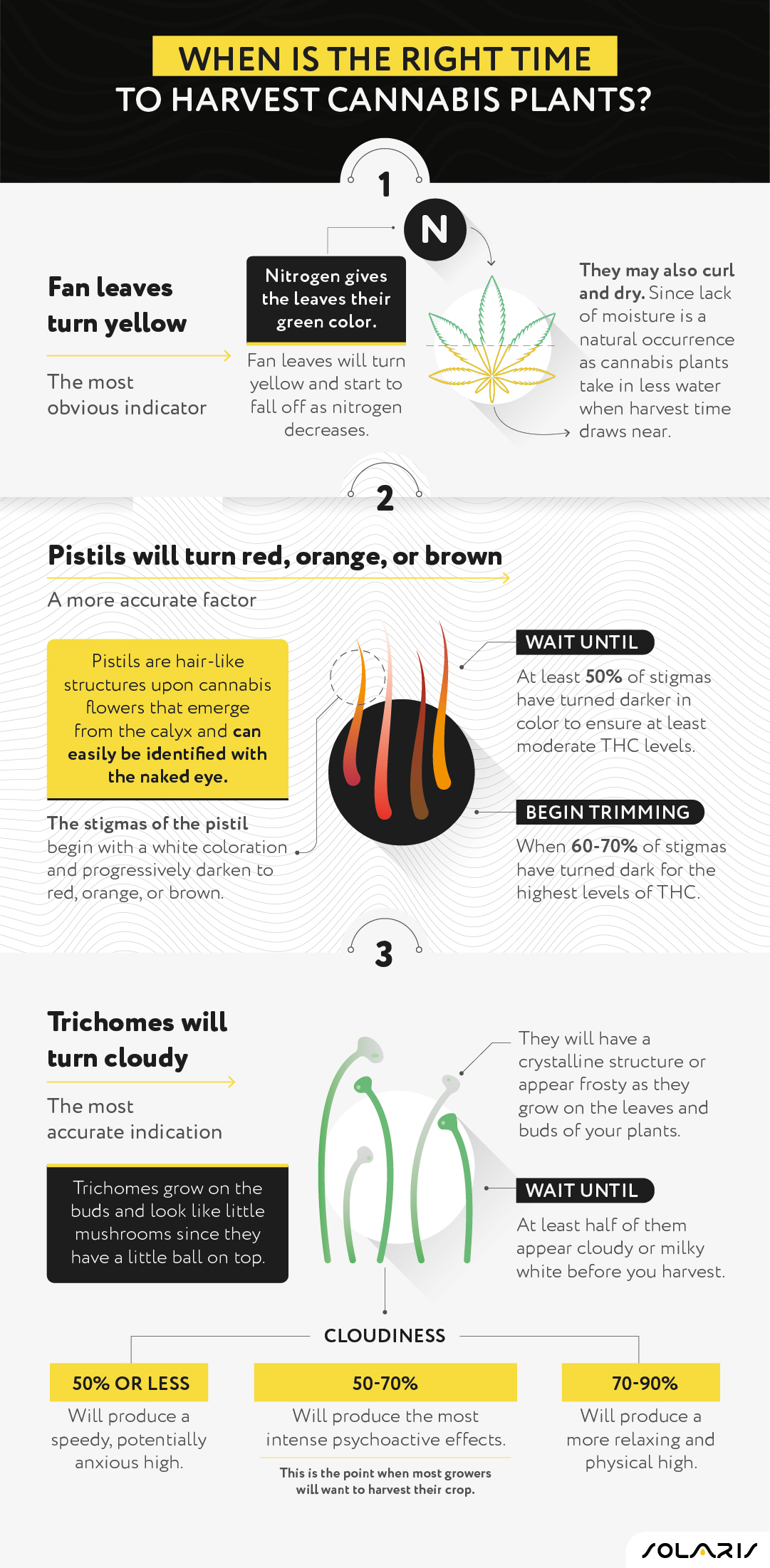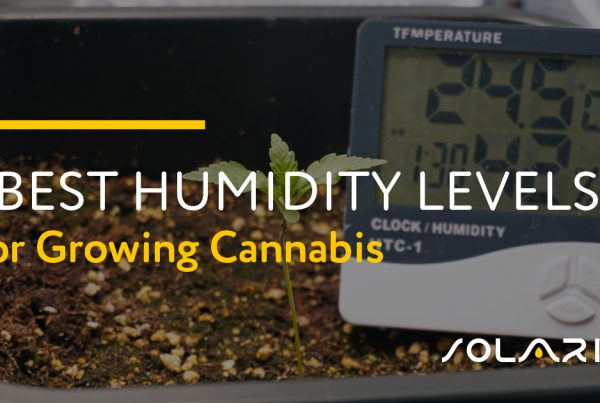Harvesting your cannabis garden is often the most exciting time for growers. All of your previous efforts culminate at this moment when the decision is made to cut your crop. However, it is important to remain patient throughout the process and not rush it.
Knowing when to harvest your plants can be one of the trickiest aspects of cannabis growing. Harvest too soon and your weed will not be very potent. Wait too long and you end up with an overly narcotic effect and too strong of a taste.
There is a large debate surrounding exactly when to harvest buds. There are general guidelines for each cannabis subspecies in regards to the optimal time. Indica strains are usually ready after 6-8 weeks of flowering, and sativa strains after a 9-12 week period of flowering. Autoflowering strains often take approximately 8-12 weeks after the seedling stage.
Although these guidelines can help estimate when harvest time may occur, more attention to detail is required to make sure you are spot on with your timing.
When is the right time to harvest cannabis plants?

Because so much is riding on the decision to harvest, it is important to understand what is happening on a biological level with the cannabis plants. There are several factors to consider when harvest approaches to ensure the best crop possible:
- The flowering time recommended by the breeder
- The color and shape of the fan leaves
- The color of the pistils (stigmas)
- The color of the trichomes
The time recommended by the breeder is the least accurate measurement of when to harvest. Breeder information should be used to help determine your garden schedule, but it has less to do with when the plants are in peak harvest.
Fan leaves turn yellow
The most obvious indicator of when a cannabis plant is ready to harvest is the changing colors of the fan leaves. During the flowering stages, nitrogen gives the leaves their green color. When it is time to harvest, fan leaves will turn yellow and start to fall off as nitrogen decreases.
As the fan leaves turn from green to yellow, they may also curl and dry. The lack of moisture is a natural occurrence as cannabis plants take in less water when harvest time draws near.
Pistils will turn red, orange, or brown
A more accurate factor is looking at the pistils. Pistils are hair-like structures upon cannabis flowers that emerge from the calyx and can easily be identified with the naked eye. Pistils contain the reproductive organs of the female cannabis plant and will develop a seed if pollinated by a male.
The pistil contains the reproductive parts of a flower, and the vibrant, hair-like strands of the pistil are called stigmas. Stigmas serve to collect pollen from males.
The stigmas of the pistil begin with a white coloration and progressively darken to red, orange, or brown over the course of the plant’s maturation. They play an important role in reproduction, but stigmas bring very little to the flower’s potency and taste.
You can make a solid estimate of when to harvest by tracking the stigmas’ change in color from white to red, orange, or even brown. The stigma color depends on the plant strain. If most of the stigmas are still visibly white, then it is too early to harvest and your plants should be left to mature for a little longer.
Growers should wait until at least 50 percent of stigmas have turned darker in color to ensure at least moderate THC levels. Begin trimming flowers when 60-70 percent of stigmas have turned dark for the highest levels of THC. Those growers looking for a more relaxing and physical high should wait until 70-90 percent of stigmas have changed colors, as more THC will have converted to CBN at this stage.
Trichomes will turn cloudy
Observing your buds’ trichomes offers the most accurate indication of when cannabis is ready to harvest. Trichomes grow on the buds and look like little mushrooms since they have a little ball on top. They tend to be shiny, sticky and are the very factories that produce the hundreds of known cannabinoids, terpenes, and flavonoids that make our favorite cannabis strains potent, unique, and effective.
Trichomes will have a crystalline structure or appear frosty as they grow on the leaves and buds of your plants. Clear trichomes indicate that it is immature and that you need to wait a little longer before harvest. Ideally, at least half of the trichomes should appear cloudy or milky white before you should consider harvesting.
At about 50 percent or less cloudy trichomes will produce a speedy, potentially anxious high.
Eventually, trichomes will become about 50-70 percent cloudy. At this stage, they hold the greatest levels of THC and will produce the most intense psychoactive effects. This is the point when most growers will want to harvest their crop.
If left longer, trichomes will turn to about a 70-90 percent cloudy color while showing some amber color. Harvesting at this stage will produce a more relaxing and physical high.
This color change is nearly impossible to see with the naked eye, so make sure you have a magnifying tool handy.
Examining trichomes
A magnifying tool is the best way to see if your plants are ready for harvest. With the right tools, you can clearly see the details of the trichomes.
There are a few magnifying options to choose from:
- Jeweler’s loupe: Perfect for those on a budget, this low-tech tool is the least helpful. However, it is still good enough to provide somewhat of a gauge.
- Handheld magnifier: This option works well, but it can be cumbersome to use. You will need to get the focus right to view those trichomes.
- Digital microscope: Although expensive, this is the best option, as it will give you a clear answer as to whether your plants are ready to harvest. The main downside is that you will need a computer to see the results.


